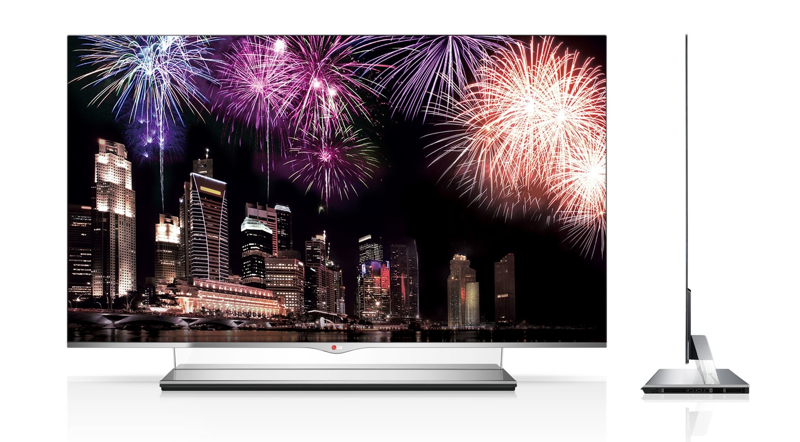World's first large screen OLED TV hits market


South Korea's LG Electronics has beaten country rival Samsung and all others in the race to bring a large screen OLED TV to market.
LG will start taking orders on Jan. 3 in its home country for a 55-inch model that it will begin delivering next month, the company said in a press release.
An OLED, or organic light emitting diode, is a material that emits light when an electric current passes through it. OLED TVs do not require back lighting, and thus are thinner than other flat screen TV technologies like LCD and plasma.
The WRGB OLED TV Model 55EM9700 (yes, even the flashiest new TVs carry the dullest old nomenclature) measures all of 0.16 inches (4 millimeters) thin, and weighs 22 pounds (10 kilograms).
THIN ON THE GROUND TOO
LG introduced it at the Consumer Electronics Show in Las Vegas a year ago. Samsung has also shown a 55-inch OLED TV. Until now no company has actually taken orders. Manufacturers make and sell much smaller OLED TVs (LG offers a 15-inch model), cellphones and tablets, but they have had difficulty making them in larger sizes. LG is now changing that.
"We believe that OLED will usher in a whole new era of home entertainment," Havis Kwon, CEO of LG's Home Entertainment Company, said in the press release. "Not since color TV was first introduced 60 years ago has there been a more transformational moment. When high definition TV was first introduced 15 years ago, the public's reaction was 'wow!' but when customers see our razor-thin OLED TV for the first time, they're left speechless."
They're also left a lot lighter in the wallet, as LG set the price at 11 million South Korean won, or $10,334 at the time of this writing.
LG says that OLED technology delivers more vivid and vibrant colors.
Curiously, the press release did not mention anything about energy savings, which is a much trumpeted attribute of "conventional" non-organic light emitting diodes - semiconductors that emit light and that increasingly are appearing in energy-efficient light bulbs.
OLEDs are not as energy efficient as LEDs. When Holland's Holst Centre announced a program to develop a bendable OLED last year, it noted that one obstacle it still faced was lowering the power consumption.
LG's OLED TVs, like the OLED tablets and smartphones on the market, are rigid, not flexible.
Bendable OLED materials augur radical new possibilities for gadgets that can fold into pockets, and would also open tremendous new design possibilities in architecture, lighting and fashion.
Photo: LG
SmartPlanet reflections on OLEDs:
- Dutch push for flexible gadget screens
- Car’s ‘glass’ roof by day becomes interior light at night. Oh OLEDs!
- Roll up the iPad: Siemens advances the flexible screen
- Video: Watch this Samsung flexible tablet PC unfold
- Eye candy: Glow-in-the-dark surfing
- Samsung eyes flexible gadget screens by early 2012
- Nokia toys with flexible smartphones you can bend and twist [video]
And on LEDs:
- Philips recalls LED bulb for electrical fault
- Another myth of LED energy savings
- Goodbye LEDs, hello plastic bulbs?
- The myth of LED energy savings
- Empire State Building gets flashy new lighting system
- LEDs set ‘fire’ to Olympic rings in London
- GE caught paying for Olympic gold
- LEDs turning sow’s ear into silk purse in Paris
- More LED truths and half-truths
- When good lights go bad: LED breakdown
- The hot and cold of LED lighting
This post was originally published on Smartplanet.com